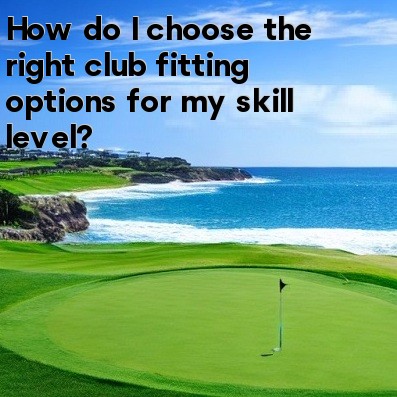
In Golf, How to Choose the Right Club Fitting Options for Your Skill Level
When it comes to golf, having the right equipment is crucial for improving your game. One important aspect of golf equipment is club fitting. Club fitting involves customizing your clubs to match your unique swing characteristics and skill level. Here are some factors to consider when choosing the right club fitting options for your skill level:
- Club Length: The length of the club shaft is a crucial factor in club fitting. If you are a taller golfer, you would typically require longer clubs, whereas shorter golfers may benefit from shorter clubs. Longer clubs can help create more clubhead speed and distance, while shorter clubs can provide better control and accuracy.
- Lie Angle: The lie angle of a club refers to the angle between the clubhead sole and the shaft. Incorrect lie angles can result in misdirected shots. If you consistently hit shots to the left or right, it may be a sign that your club's lie angle needs adjustment. A club fitting session can help determine the appropriate lie angle for your swing.
- Clubhead Design: Different clubhead designs cater to different types of players. For example, game improvement irons with a larger clubhead are often recommended for beginners or high handicap players as they offer forgiveness on off-center hits. On the other hand, more experienced players may prefer blade-style irons that offer greater shot-shaping control.
- Shaft Flex: The flex of a golf club's shaft determines how much it bends during the swing. Shaft flex is typically labeled as regular, stiff, or extra stiff. A club with the correct shaft flex can help optimize your swing mechanics and produce better results. Slower swing speeds generally benefit from a more flexible shaft, while faster swing speeds require a stiffer shaft for better control.
- Grip Size: The grip size of a golf club can greatly affect your ability to control the club during the swing. If your grip feels too small, it may cause you to hold the club too tightly, resulting in less control. Conversely, an oversized grip can hinder proper wrist action. Choosing the right grip size can help ensure a comfortable and secure grip.
Keep in mind that these factors are just a starting point and there may be additional club fitting options to consider based on your individual needs and preferences. To get the most accurate fitting, it is recommended to visit a professional club fitter who can assess your swing and provide personalized recommendations.
A professional club fitting session typically involves analyzing your swing mechanics, measuring your current clubs, and testing various options to find the best fit. The use of launch monitors, swing analyzers, and other advanced technologies can further enhance the fitting process.
Investing in a club fitting session can be a game-changer for golfers of all skill levels. By selecting the right club fitting options, you can maximize your potential and improve your overall performance on the course. Remember, golf is a game of precision, and having equipment that suits your specific needs can significantly enhance your enjoyment of the sport. So, make sure to prioritize club fitting and get yourself on the path to golfing success!





